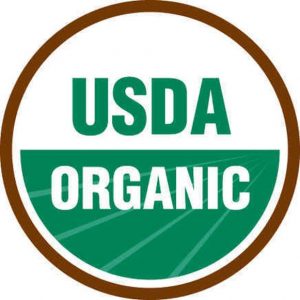The U.S. Department of Agriculture has put in place a set of national standards that food labeled “organic” must meet, whether it is grown in the United States or imported from other countries. As of October 21, 2002 , when you buy food with the USDA “organic” label, you can be sure that it was produced using the highest organic production and handling standards in the world.
What is organic food?
Organic food is produced by farmers who emphasize the use of renewable resources and the conservation of soil and water to enhance environmental quality for future generations. Organic meat, poultry, eggs, and dairy products come from animals that are given no antibiotics or growth hormones.
Organic food is produced without using most conventional pesticides; fertilizers made with synthetic ingredients or sewage sludge; bioengineering; or ionizing radiation. Before a product can be labeled “organic,” a Government-approved certifier inspects the farm where the food is grown to make sure the farmer is following all the rules necessary to meet USDA organic standards. Companies that handle or process organic food before it gets to your local supermarket or restaurant must be certified, too.
Is organic food better for me and my family?
USDA makes no claims that organically produced food is safer or more nutritious than conventionally produced food. Organic food differs from conventionally produced food in the way it is grown, handled, and processed.
When I go to the supermarket, how can I tell organically produced food from conventionally produced food?
You must look at package labels and watch for signs in the supermarket. Along with the national organic standards, USDA developed strict labeling rules to help consumers know the exact organic content of the food they buy. The USDA Organic seal also tells you that a product is at least 95 percent organic.
Single-ingredient foods
Look for the word “organic” and a small sticker version of the USDA Organic seal on vegetables or pieces of fruit. Or they may appear on the sign above the organic produce display.
The word “organic” and the seal may also appear on packages of meat, cartons of milk or eggs, cheese, and other single-ingredient foods.
Will I find the USDA Organic seal on all 100 percent organic products, or products with at least 95 percent organic ingredients?
No. The use of the seal is voluntary.
How is use of the USDA Organic seal protected?
People who sell or label a product “organic” when they know it does not meet USDA standards can be fined up to $11,000 for each violation.
Does natural mean organic ?
No. Natural and organic are not interchangeable. Other truthful claims, such as free-range , hormone-free, and natural, can still appear on food labels. However, don’t confuse these terms with “organic.” Only food labeled “organic” has been certified as meeting USDA organic standards.
For more detailed information on the USDA organic standards, visit our web site at http://www.ams.usda.gov/nop call the National Organic Program at 202-720-3252, or write USDA-AMS-TM-NOP, Room 4008 S. Bldg., Ag Stop 0268, 1400 Independence, SW, Washington, DC 20250.
Printed: April 2002
Updated: January 2007

